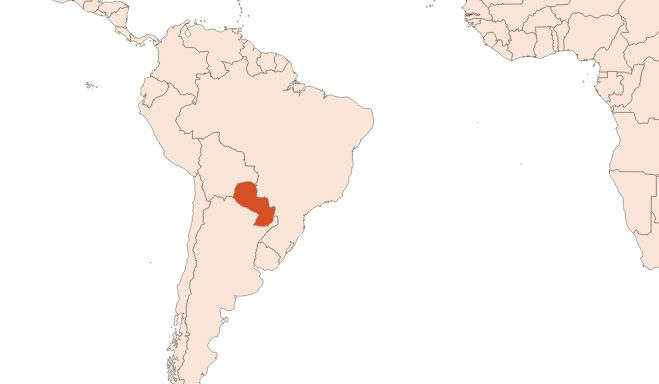| Company | Ingredient Name | ID | Comments | Naturality | Certifications | Purity | Latin name | Treated part | Geographical origin | MOQ |
|---|---|---|---|---|---|---|---|---|---|---|
|
|
Huile essentielle de Petit grain Mandarinier - 30 gr | - |
Visit website
|
- | - | - | - | - | - | |
|
|
PETIT GRAIN | F1921 |
Visit website
|
Absolue | - | Citrus aurantium var. amara L. | Feuille, Rameau | Maroc | - | |
|
|
PETIT GRAIN DETERPENEE | F1913 |
Visit website
|
Huile essentielle |

|
- | Citrus aurantium var. amara L. | Feuille, Rameau | Paraguay | - |
General Presentation
-
CAS N° : 8014-17-3
-
EINECS number : 84929-38-4
-
FEMA number : 2855
-
Appearance : Colorless liquid
-
Density : 0,884 - 0,892 @20°C
-
Volatility : Head/Heart
-
Price Range : €€€
Physico-chemical properties
-
Optical rotation : Donnée indisponible
-
Vapor pressure : Donnée indisponible
-
Refractive Index @20°C : Donnée indisponible
-
Acid Value :
-
Flash Point :
Uses
Uses in perfumery :
Used in fougere, children's eaux de toilette and colognes.
Major Components :
- Linalyl Acetate (≈50%)
- Linalool (20-25%)
- Alpha-Terpineol (≈6%)
- Geranyl Acetate (≈4%)
- Geraniol (≈3%)
- Neryl Acetate (≈2%)

Photo credits: ScenTree SAS
Botanical name :
Data not available.
Botanical profile :
The bitter orange tree is a tree of the Rutaceae family and the Citrus genus.
Chemotypes :
The genus Citrus includes the vast majority of citrus fruits and includes a large number of varieties available in perfumery:
Bergamot - (Citrus bergamia) is a hybrid of lemon and bitter orange, grown for the essential oil of its fruit and petitgrain.
Bitter orange or bigarade orange - (Citrus aurantium), grown in Spain and Florida.
Citron - (Citrus medica), grown in Italy (Sicily).
Lemon - (Citrus limon), cultured in Italy for the essential oil of its fruit and of its leafy twigs (Petitgrain).
Combava - (Citrus hystrix), grown in Thailand and India.
Lime - (Citrus aurantifolia), grown for its fruit in Mexico for the most part.
Mandarin - (Citrus reticulata), grown mainly in Italy for its fruit and for its petitgrain, by extracting the leaves from the tree. Its hybrid with sweet orange gave birth to clementine.
Orange - (Citrus sinensis) is famous for the cultivation of its fruits, whose juice and essential oil are extracted in Brazil and California in particular, which is the most used of all perfumes.
Grapefruit - (Citrus paradisii) of Malay origin, is cultivated for its essential oil in Brazil and Israel in particular.
Yuzu - (Citrus junos), produced in Japan and Korea.
Extraction process :
The bigaradier is a tree about 3 meters tall in adulthood, whose leaves contain a strong fragrant principle.
The essential oil of petitgrain bigarade results from the extraction of the deciduous branches with water. The twigs are cut so the tree is left as a shrub. The branches are stored in a large cart before they are brought to the factory where they are directly steam distilled.
After the hydrodistillation, the water found in the distillate is called ''eau de brout ''. The essential oil is collected by decantation, above the eau de brout.
The extraction yield of petitgrain bigarade is between 0.2 and 0.4%.
The bigaradier gives many extracts. The bitter orange EO is obtained by cold expression, the petitgrain can be extracted by steam distillation and the Orange Blossom Absolute is obtained by extraction with volatile solvent, unlike Neroli EO, which results from an extraction with water directly with the flowers.
Other comments :
Initially, the term petitgrain was used to name the small green fruits produced by the bitter orange.
In Paraguay, the bitter orange barely flourishes. It is therefore a hybrid between the bitter orange and the sweet orange tree that is cultivated.
Paraguay remains the main grower of petitgrain.
Citrus currently suffer from a disease called ''citrus greening ''. This disease is deadly for citrus fruits and no treatment exists. It is transmitted by a vector insect that attacks young shoots: the psylla. This results in the premature death of many trees and therefore the decline in the general production of the essential oil and its quality.
Stability :
The esters identified in this raw material can form their corresponding acid in stability tests
The terpenes identified in this raw material can polymerize when they are oxidized
Regulations & IFRA
Allergens :
Linalool - Citral - Geraniol - D-Limonene
IFRA 51th :
This ingredient is restricted by the 51th amendment
Annexe I :
Some regulated synthetic ingredients are found in nature and in certain proportions in natural ingredients. This presence in nature has to be taken into account when calculating limits of use recommended by the IFRA. In case you do not know these concentrations, you can use the ones estimated by the IFRA. Here they are :
| List of regulated compounds contained in this ingredient | ||
|---|---|---|
| Regulated ingredient name | CAS N° | Estimated Concentration |
| Citral | 5392-40-5 | 0,65 |
| Citral | 5392-40-5 | 0,14 |
| Citronellal | 106-23-0 | 0,05 |
| Citronellal | 106-23-0 | 0,05 |
| Methyl N-methylanthranilate | 85-91-6 | 50,13 |
| Methyl N-methylanthranilate | 85-91-6 | 0,06 |
| Geraniol | 106-24-1 | 2,4 |
| Geraniol | 106-24-1 | 2,77 |
| Geranial | 141-27-5 | 0,18 |
| 2-Hexenal | 505-57-7 | 0,09 |
| Neral | 106-26-3 | 0,08 |
| trans-trans-Farnesol | 106-28-5 | 0,03 |



